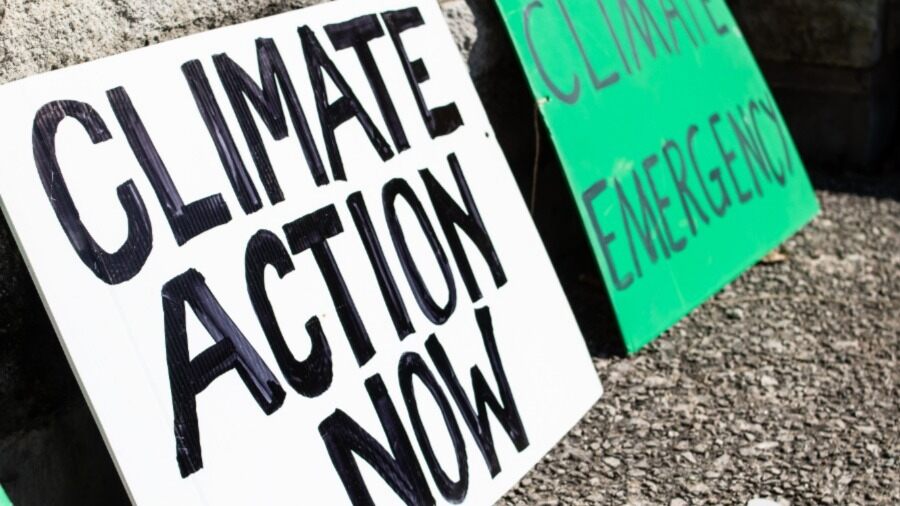The availability of adequate and affordable finance remains a constraint in India's climate actions, the Economic Survey for 2022-23 tabled in Parliament on Tuesday said.
The country's climate actions have so far been largely financed from domestic sources only, including government budgetary support, a mix of market mechanisms, fiscal instruments and policy interventions, it added.
While several estimates of the required investments are indicated in the long-term low greenhouse gas emission development strategies (LT-LEDS) report prepared by India, it is important to note that all allude to a need for tens of trillions of US dollars, it said.
While India is less responsible for the high stock of emissions, it has consistently engaged in demonstrating global leadership towards adopting various measures and ensuring a low-emission growth pathway, with a commitment to the net-zero emissions goal by 2070, it added.
"India's climate ambitions require resources to be dedicated to the cause of climate change, in addition to, what is needed for the country's development goals," the survey said.
Obligations on climate should be matched with the on-time availability of climate finance, technology and inputs like critical minerals, while not jeopardising the socio-economic development objectives and aspirations, it noted.
Even if India has so far undertaken climate actions on its own, the heightened expectations of further large-scale climate measures have to be equated with the enhanced initiatives by developed countries in terms of providing means of implementation, including finance, technology transfer and capacity-building support, it said.
More importantly, the global climate agenda will advance if advanced countries can set examples of policy and behavioural changes that work in their backyard and whose trade-offs are well recognised and accepted by their people. Then, it might be realistic to expect such policies and behavioural expectations of households to succeed in developing countries, it added.
Climate change is primarily attributed to disproportionately high cumulative emissions, both historical and high per capita annual emissions of greenhouse gases (GHGs) of the developed countries.
The global nature of the problem makes India one of the most vulnerable regions despite having contributed only about 4 per cent in the cumulative global emissions (for the period 1850-2019) and maintaining its per capita emission at far less than the world average.
According to the survey, the understanding in the Climate Convention and the Paris Agreement has been that the developed countries will mobilise the resources through public and other sources, including by catalysing private finance, to enable a flow of financial resources at a reasonable cost.
While these are yet to materialise, India has scaled up its efforts towards greater mobilisation of private capital to meet climate action goals, it said.
India has integrated the development goals with ambitious climate action goals, be it in the form of augmented solar power capacity (installed), higher energy saving targeting notified in PAT cycle-VII and improved green cover facilitated by Green India Mission, among other targeted government actions.
As part of dedicated efforts to preserve ecosystems, India now has 75 Ramsar sites for wetlands, in addition to various regulatory and promotional measures to protect and conserve mangroves. Continued river conservation and rejuvenation efforts are underway through Namami Gange and National River Conservation Plan (NRCP).
In August 2022, the country updated the Nationally Determined Contributions (NDCs) in line with the Prime Minister's vision expressed in the 26th meeting of the Conference of Parties of UNFCCC.
In terms of transition to renewable energy sources, India has already achieved its target of 40 per cent installed electric capacity from non-fossil fuels ahead of 2030. It has advanced the target to 50 per cent, which should also translate to a significant reduction in the average emission rate.
The National Hydrogen Mission and Green Hydrogen Policy have been introduced to enable India to be energy independent by 2047. Its pivotal role is also reflected in India's Long Term Low Emissions Development Strategy (LT-LEDS).
"The availability of adequate and affordable finance remains a constraint in India’s climate actions. The country has so far largely met its requirements from domestic sources only," it said.
Since finance is a critical input for its climate actions, the country has scaled up its efforts towards mobilising private capital, including through sovereign green bonds, to meet climate action goals.
A framework for the latter has been issued in compliance with International Capital Market Association (ICMA) Green Bond Principles. The sustainable finance framework has also evolved from the initial steps covering the top listed 100 companies required to conform to sustainability standards.
The requirement has now not only been extended to 1,000 top listed companies on a mandatory basis but also the sustainability standards have become much stronger and measurable that correspond to the best practices while taking into account the specific context of India, it said.
Despite the adverse impacts of COVID-19 on the economy, the country has enhanced its climate ambition manifold and embarked on a long-term strategy towards a low GHG Emission Development Strategy by adopting a multi-pronged approach, it added.
Except for the headline, this story has not been edited by The Telegraph Online staff and has been published from a syndicated feed.











